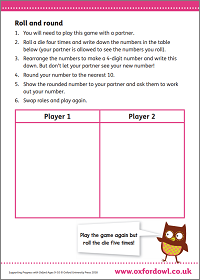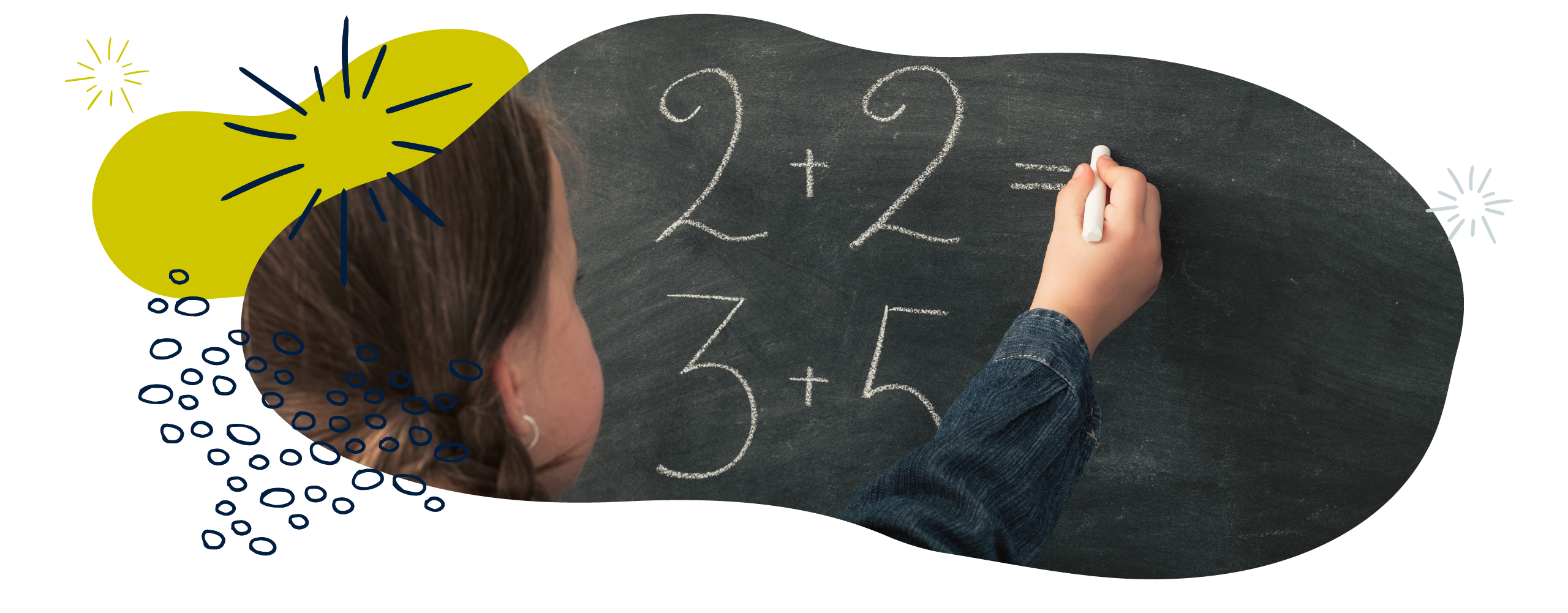Addition & subtraction in Year 4 (age 8–9)
In Year 4, your child will learn to solve addition and subtraction problems involving numbers up to four digits. They will use lots of different methods, including using objects, diagrams, and formal written methods.
The key words for this section are area/grid method, difference, and inverse.
What your child will learn
Take a look at the National Curriculum expectations for addition and subtraction in Year 4 (ages 8–9):
Add and subtract numbers with up to four digits
Your child will learn to solve addition and subtraction problems involving numbers up to four digits.
They will use lots of different methods, including using objects, diagrams (like grids and number lines), and formal written methods like column addition and column subtraction.
Estimate and use inverse operations to check answers
Your child will estimate answers to addition and subtraction problems before calculating answers accurately. They can do this by rounding numbers before a calculation. For example:
Estimate £5.73 + £13.12 + £2.14 = ?
Rounding to the nearest £1, the sum is £6 + £13 + £2 = £21.
So, when we work out the answer accurately, we can except the answer to be about £21. If it is not, we know that something has probably gone wrong with our calculation.
Your child will also use their understanding of the fact that addition and subtraction are inverse operations to check the accuracy of their answers. For example, if they have calculated 1242 + 3452 = 4694, they could check the answer by working out that 4694 – 1242 = 3452.
Solve two-step problems
A two-step word problem might have two different operations (for example, addition and subtraction) or two of the same operation (for example, subtraction and subtraction). Your child will need to figure out which operations they need for the problem. For example:
‘48 people were supporting the red team at the football match and 36 people were supporting the blue team. Then 16 supporters left. How many people were still watching the match?’
Your child will also use a variety of methods to calculate addition and subtraction problems. They might solve problems mentally, use drawings or diagrams, use models such as the area/grid method, or use formal column methods. They will need to be able to choose an efficient method to solve a problem and to be able to check their answer using a different method.
When your child has solved a problem, they will need to be able to explain how they have solved it and why they used a particular method.
How to help at home
There are lots of ways you can help your child to understand addition and subtraction. Here are just a few ideas to support your child’s learning:
1. Make estimates on the go
It’s important at this stage that your child is used to estimating. Look for everyday opportunities for your child to estimate. For example, use estimation to work out totals when you’re shopping.
I have £25. We need to buy a birthday present that costs £5.50, lunch that will cost £8.75, and the bus journey will cost £6.50. Will I have enough? Ask your child to estimate the answer to check.
£6 + £9 + £7 = £22. So, your child should know that you probably have enough money.
2. Use the inverse
By Year 4, your child should understand that addition and subtraction are inverse operations. For example, if they have calculated 1242 + 3452 = 4694, they could check the answer by working out that 4694 – 1242 = 3452.
Shopping can provide great opportunities to practise checking answers using inverse operations. For example, ask your child to use the inverse to check the bill is right.
The total is £56 and we bought two items costing £23 and £33.
We can check by taking £23 from the total. That should give us £33.
3. Round everything!
Look for opportunities for your child to practise their rounding skills. It’s important that they can round to the nearest 10, 100, and 1000.
If you’re buying something, ask your child to round it to the nearest pound. The next time you’re driving on a motorway and you see the distances in miles, ask your child to round them to the nearest 10 or 100. When you’re cooking, round up or down to the nearest 10 grams. The opportunities are endless!
Activity: Roll and round

Roll the dice, make four-digit numbers, and round them to the nearest 10.
4. Use lots of different methods
Encourage your child to explore a range of methods for solving addition and subtraction problems.
Methods could include partitioning numbers into parts to add or subtract. For example:
2143 + 625 = ?
To solve this, you could partition 2143 into 2000, 100, 40, and 3, and then partition 625 into 600, 20, and 5.
The next step is to add the numbers together. First, add the ones: 5 + 3 = 8.
Then, add the tens: 40 + 20 = 60.
Then, add the hundreds: 600 + 100 = 700.
And you also have the 2000.
Then, you can add all of these together: 8 + 60 + 700 + 2000 = 2768.
Your child may also draw pictures to represent how they have added or subtracted numbers. Number lines and number grids are useful for solving problems, as are formal written methods like column addition and subtraction.
Your child will understand subtraction as ‘difference’ as well as ‘taking away’. A good method that sees subtraction as difference is placing groups of objects into two rows to compare them and find the difference. This is particularly good for more tactile learners.
Your child may also find the difference between two numbers by counting up or counting back. For example, 27 – 18 could be interpreted as, ‘What is the difference between 27 and 18?’ Your child may count back from 27 to 18 to find the difference of 9 or count up from 18 to 27 to find the difference of 9.
Practising lots of methods not only means your child can more easily check their work – it means they can always pick the best method for any particular question. When your child has solved a problem, encourage them to use a different strategy to check their answer, and ask why they have chosen that particular method.
